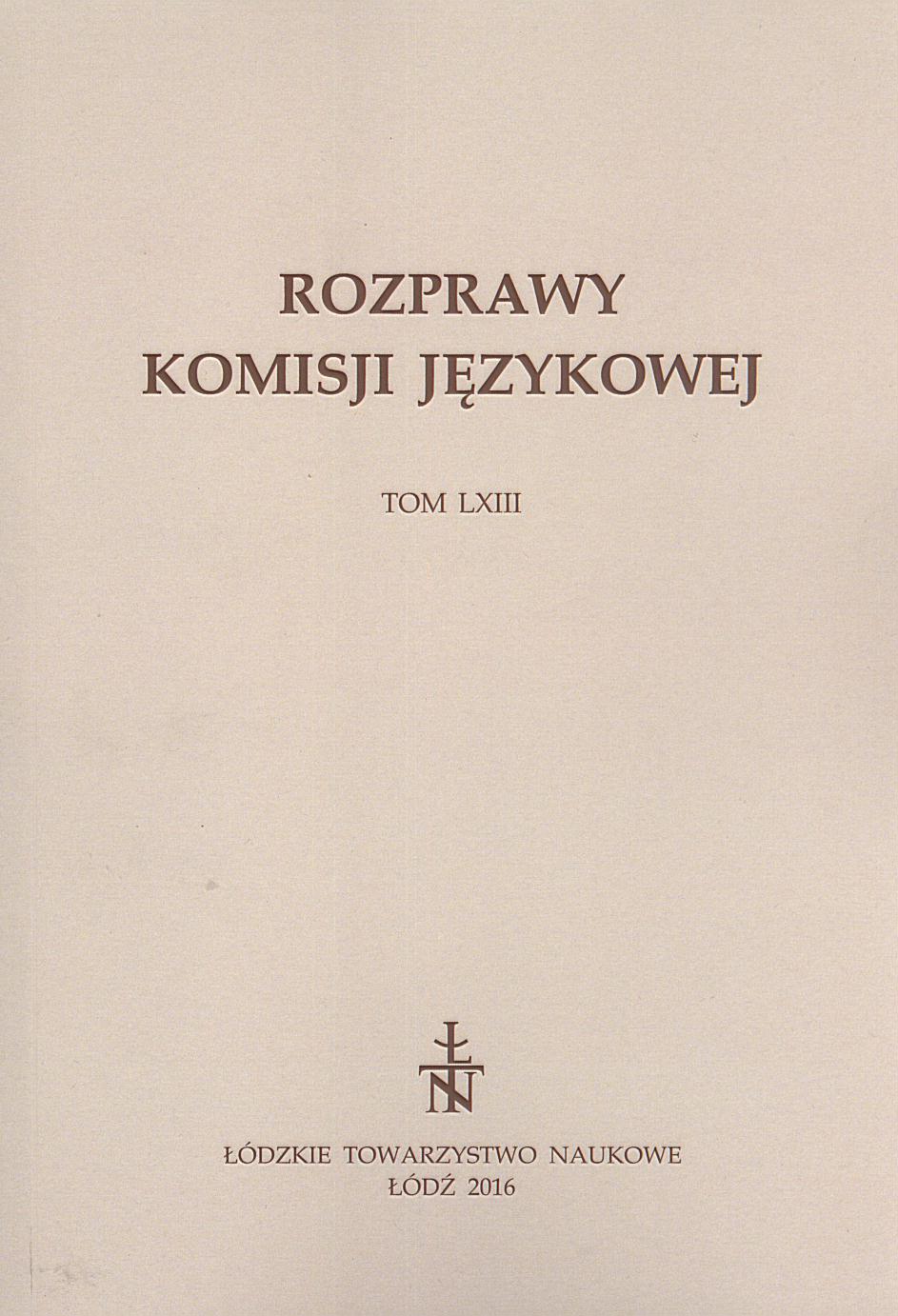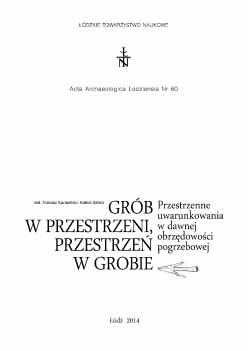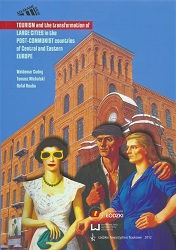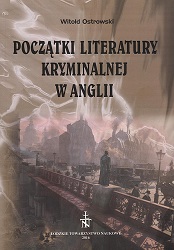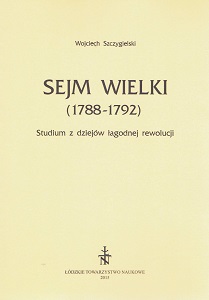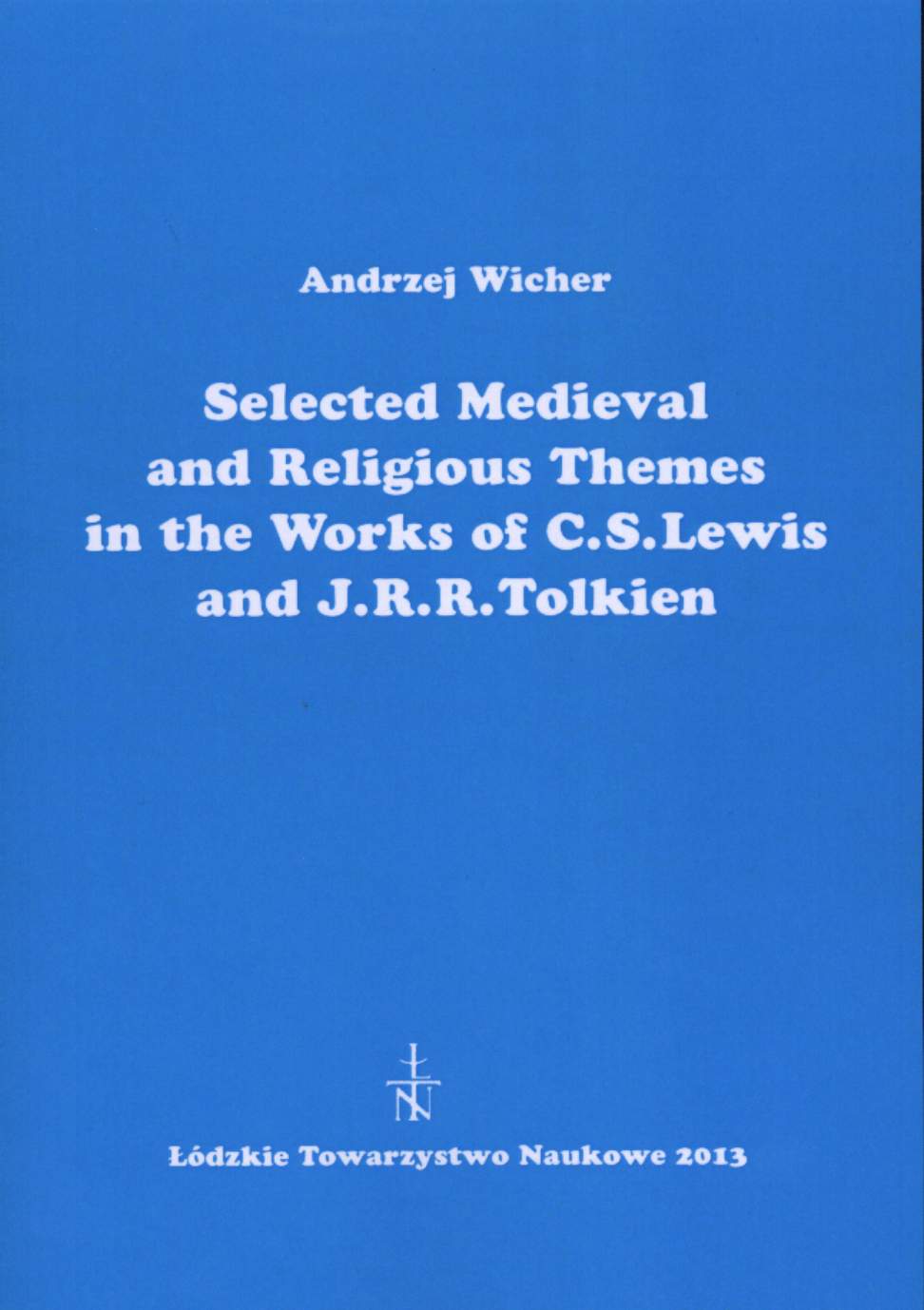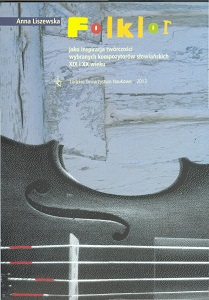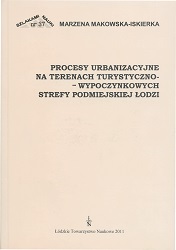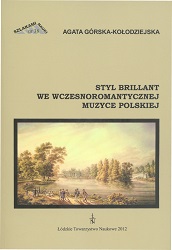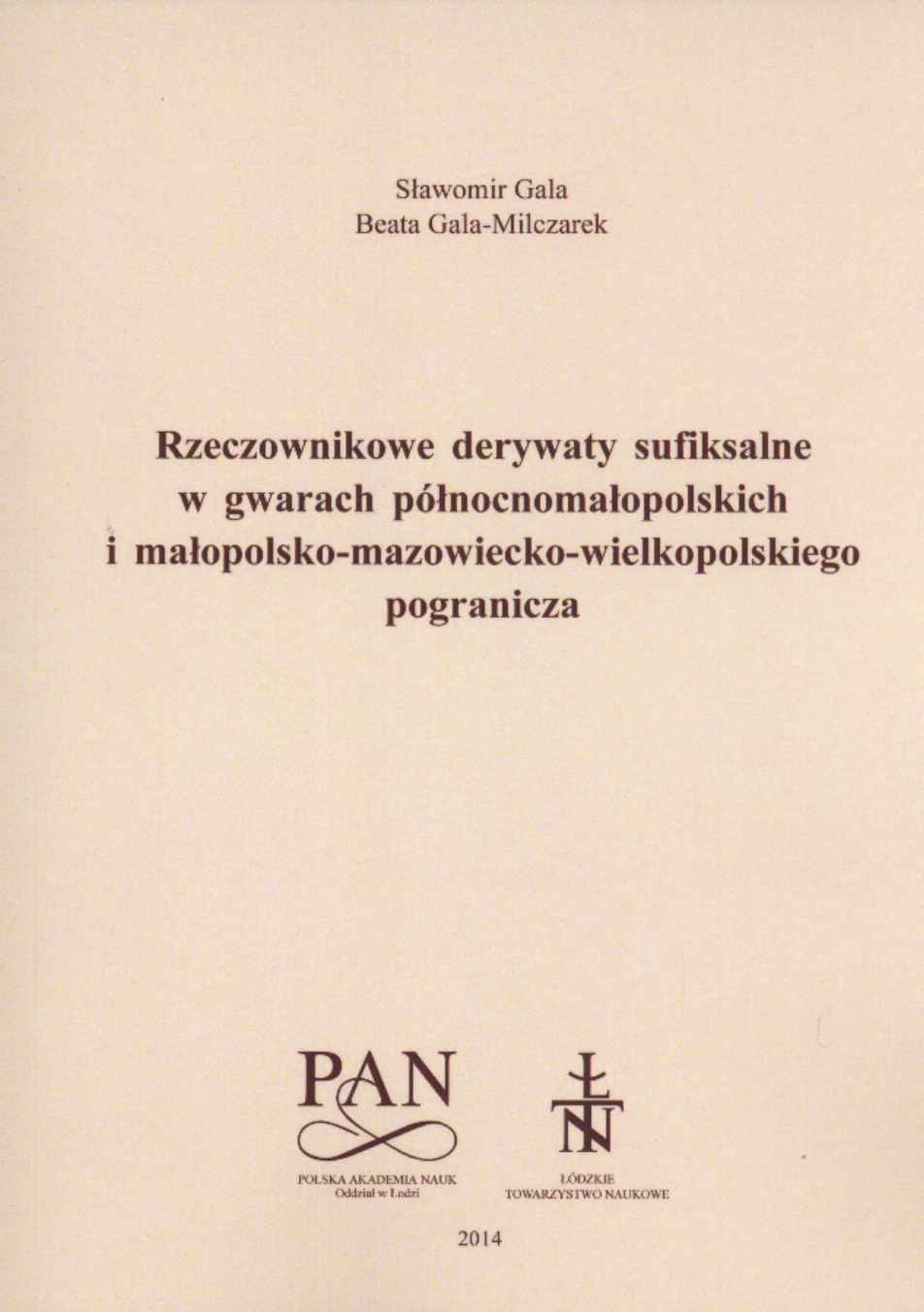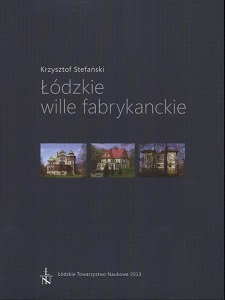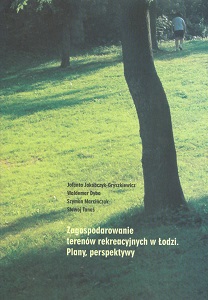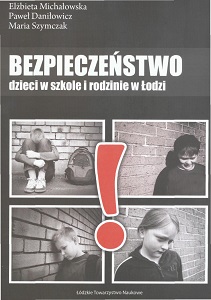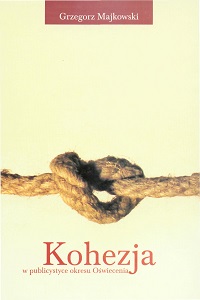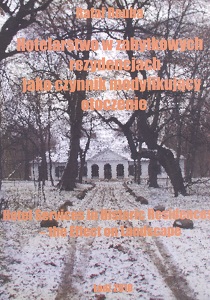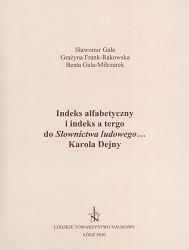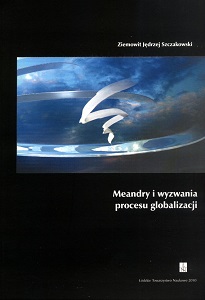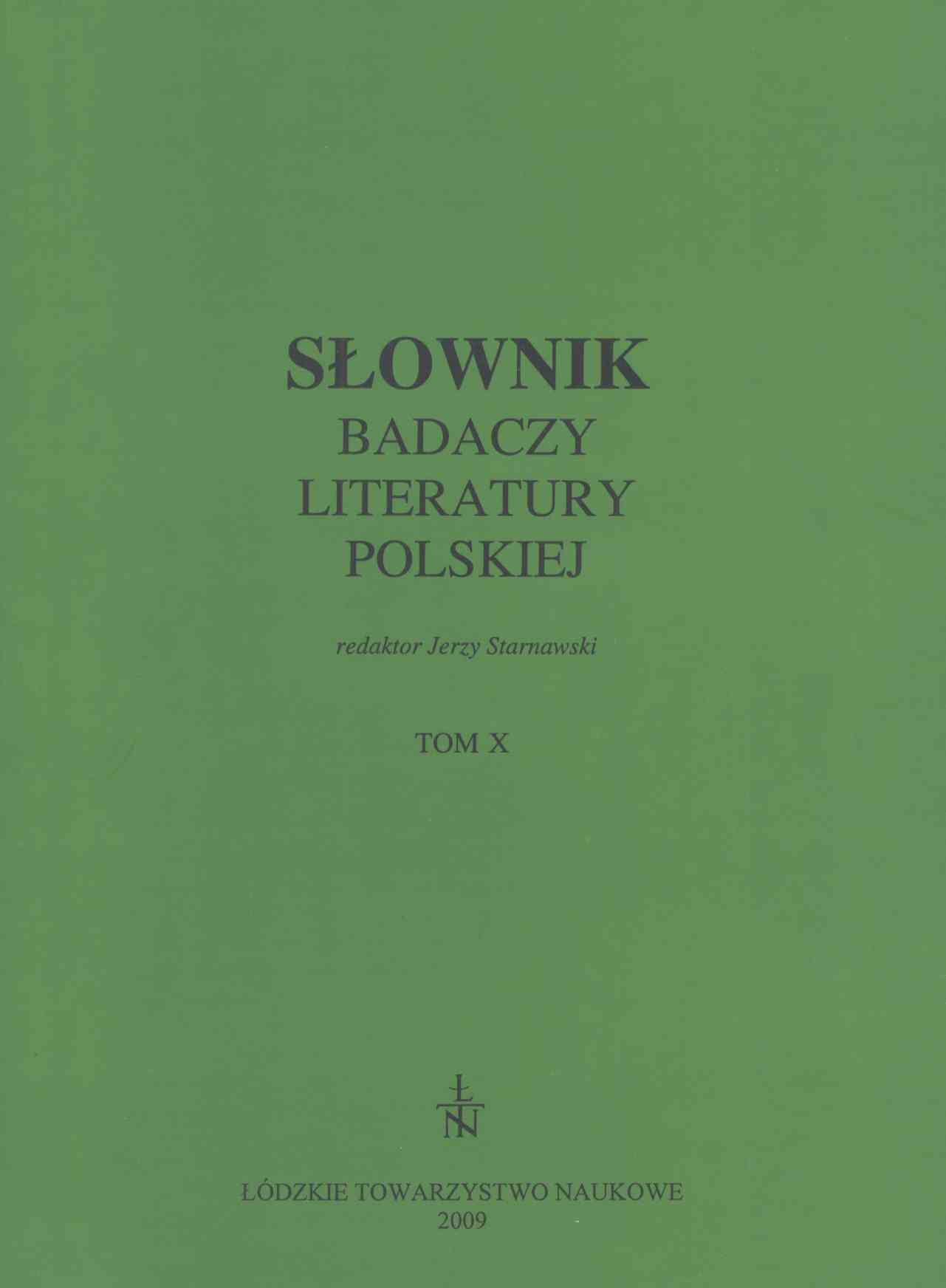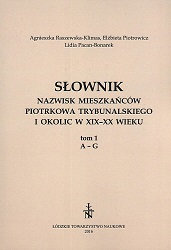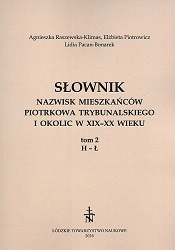Początki literatury kryminalnej w Anglii
Author(s): Witold Ostrowski / Language(s): Polish
Keywords: English crime literature; English crime fiction; pious criminal tales; criminal ballads; picaresque; murder plays and tragedies of crime
What is crime LITERATURE. Crime literature consists of works on crime. Crime is not only murder, but also kidnapping, blackmail, extortion, robbery, incest, bigamy... A work belongs to crime ‘literature when its theme, from the beginning to/ its/ end, is crime. Crime literature may be based on fact (a police report, a journalist’s reportage, an account of a trial a criminal biography or autobiography) or it may present fiction. Crime fiction takes on various literary forms and appears in many genres. It may be a poetical work like a criminal ballad or a long great poem like The Ring and the Book (1868) by Robert Browning. Many examples of crime drama may be given, beginning with Aeschylus’ Oresteia. In Shakespeare’s times twenty tragedies on crime were written by prominent playwrights. Shakespeare himself wrote seven of them. The most popular and numerous crime fiction exists in the form of a short-story (Conan Doyle) or a novel. Novels fall into crime novels like Conrad’s The Secret Agent and Dostoyevsky’s Crime and Punishment which do not present a mystery, and the detective novels like Conan Doyle’s The Hound of the Baskervilles and Dorothy L. Sayers1The Nine Tailors. In these a mystery connected with somebody’s death is solved and explained by an amateur or professional detective. One of the characteristic features of English crime literature is its oldness. It goes back to the fifteenth century and from the sixteenth century until the present day has formed an unbroken chain of various genres. The present study is an attempt to trace its history until the formation of the crime novel in the nineteenth century. Other features of the English crime literature are: good literary names among its authors: (R. Greene, T. Dekker, Ch. Marlowe, Shakespeare, D. Defoe, H. Fielding, Ch. Dickens, George Eliot, E. Gaskell, R.L. Stevenson, J. Conrad, G.K. Chesterton, T.S. Eliot); wide variety of genres: pious criminal tales, criminal ballads, informative essay warning against criminal tricks, picaresque and criminal lives of men and women, murder plays and tragedies of crime, The Newgate Calendar (chronicles of crime and novels based on The Calendar, literary respectability: most of the literature belongs to the mainstream of national literature; deep roots in real life of real people “wicked uncles” and “noble outlaws” are involved in criminal situations recurrent many periods of history and therefore frequently reflected in fiction. People, who know little about crime literature, are persuaded that if caters for low instincts and that the reason for writing it or reading it is creating vulgar sensation. The reality is much more complex. Of course, every writer wants to earn some money for his texts and Shakespeare and his colleagues wrote great tragedies and farces for the same purpose. But some crime literature of fact is written and read of necessity; pious criminal tales were written to give hope to heavy sinners and they were read by them with that feeling. Elizabethan pamphlets warned people again more than dozen criminal activities. It is a generally known fact the so-called thrillers are read by intellectuals –scientists and scholars, lawyers, physicians and engineers. Even if they read thrillers by way of emotional compensation, their intellect is not offended by the contents of the books, but rather stimulated. The offer presented to the readers is manifold. There are detective now contrived like crossword puzzles. In ABC Murders (1936) and Ten Little Nigger Boys(1939) by Agatha Christie people disappear according to the alphabet or a nursery rhyme. These are mere intellectual games. But when we read The Woman in White (1860) and The Moonstone by William Wilkie Collins, we enter a world of a period with a gallery of highly individual complex characters, respectable gentry and middle classes at the bottom of which criminal tendencies express themselves in ingenious wrong-doing. Here the reader is engaged in something deeper and richer than in a mere “whodunit”. Still more profound moral problems are to be encountered in The Secret Agent by Joseph Conrad and in Crime and Punishment by Fyodor Dostoyevsky. One of the important reasons for reading crime fiction is the experience terror in the condition of safety. In many readers inner protest against the evil of the crime and, sometimes, pity for the criminal (like Othello) are aroused. Aristotle called this kind of experience catharsis – purification. Mrs Ann Radcliffe called it terror, saw it in Shakespeare and Milton and ascribed to it the rise of the soul to a higher life. At the same time she condemned horror – feeling of fear and disgust excited low literature. One of the problems closely connected with crime literature is the problem of its evaluation. There is a difference between the literary and the social value of a book. Crime literature has achieved a unique social success in creating the myth of Sherlock Holmes, comparable to the myths of Faustus and Don Juan. The detective has become an embodiment and a symbol of scientific knowledge in the service justice. Everybody knows who Holmes was, even without having read anything about him. In the case of Conan Doyle literary value – especially power of imagination accompanied the social importance of the character. Conan Doyle’s London of the fin-de-siecle, with its fog, cabs, servants keeping their masters in order, and decadentism exemplified in Holmes himself evoke reality. The Hound of the Baskervilles is a perfect synthesis of the English tradition of the modern outlook which rejectssuperstition. There was also a real social force in the criminal plays of J. Galsworthy Silver Box (1906), Justice (1910) and Escape (1926) – which influenced for the good the English justice and penitentiary. Yet we must remember that social acceptance of all novels was late. In the early half of the nineteenth century they were considered morally suspect. It was the great Victorian novelists who made them respectable by writing them so that they could be read in a family circle. But W.M. Thackeray was of the opinion that knowledge of criminal evil somehow degrades. So the stigma of something inferior stuck to crime fiction for long. But at least in England it always made a part of the main stream of literary creation. It ought to be judged like any other literary work. The first outstanding example of a crime novel was The Unfortunate Traveller (1594) by Thomas Nashe. This is an extraordinary story of ugly horrors, but it contains a discourse of revenge that has an echo in Hamlet. Defoe’s Moll Flanders continues the picaresque genre. In the eighteenth century Mrs Radcliffe introduced into the crime novel the element of the mysterious, inspiring terror. But she failed in technically harmonizing the lengthy presentation of the psychology of terror with the fast movement of criminal action. But the presence of a mystery embodied in the background, atmosphere, incidents or character led to the investigation of the mystery of crime – to the novel of detection. This novel was an invention of the late nineteenth century – 1860’s – in England and France. It takes advantage of the technical inventions of Mrs Radcliffe – breaking off the action and carrying it to another place, surprise and suspense. Today, owing to Conrad’s film realism which presents people and things from outside, but at the same time allows for some insight in human mind and heart, character and action have been united as may be seen in the novels of Graham Greene or, for example, in The Tangled Web (1956) by the poet Nicholas Blake. The problems connected with the literary value of crime fiction exceed the scope of my book. If I mention them it is because in the early history of English crime literature two important works anticipate the detective fiction. One of them is the Scottish ballad Edward, Edward with detection and accusation carried on by dialogue. The other is Hamlet, an extraordinary combination of a detective play and a tragedy. Both of them are remarkable for their endings: in Edward, Edward it is the detective who turns up to be responsible for the crime. In Hamlet the detective is killed, because he unconsciously revealed himself to the poisoner as the one who knows. This general introduction is followed by chapters in which various genres of crime literature have been presented in detail.BRITISH CRIME BALLADThis chapter is an attempt to assess the social literary function of the British crime ballad from the 15th to the end of the 17th century and its literary influence in later times. The research has been based on E.K. Chamber’s English Literature of the Close of the Middle Ages, H. Grierson and J. C. Smith’s A Critical History of English Poetry, Brimley Johnson’s A Book of British Ballads (Everyman’s Library) and J. Kydryński’s Księga ballad angielskich i szkockich. About 30 ballads about crime have been analysed as crime fiction. As crime literature the ballad was preceded by pious tales of crime like the fictitious Life of St. Gregory (14th c.) or The Unnatural Daughter (15th c.) which used horror for moral purposes. Both genres concentrate on crime. Robin Hood and the Monk, one of the oldest ballads, shows crude brutality and sensationalism without any moral, which distinguishes it from pious tales. All crime ballads functioned as sensational literature and tend to circumstantial realism. They either present feudal manners and morals or popular sentiment where unhappy lovers are involved. Some of their plots like those of The Cruel Mother or Binnorie are very simple, but some others, usually those based on real events, show complexities which remind one of modern stories of crime and detection. Lamkin is a detailed account of a cruel revenge of a castle builder for refusal to pay him. Together with the nurse he contrives a plot to get into the castle during its owner’s absence and murders his baby and his lady. Edward, deserves special attention as a ballad in the form of a detective examination which leads to the revelation of the crime, its motivation, and the intriguer. The ballad has been translated, rather indifferently, by the great Polish romantic poet Juliusz Słowacki in his youthful tragedy Maria Stuart. In the late 17th century British crime ballad was replaced by a crime pamphlet, but it paved the way for a literary character of a glamorous picaresque hero in the person of Robin Hood; it also suggested some models of criminal plots to later writers. In the late 18m century it began to exert its influence on major writers through collections of old ballads. As examples of this influence The Fair Helen of Kirkconnel The Douglas Tragedy and The Ballad of Cumnor Hal have been discussed. The first found its echo in the paraphrases of John Mayne and W. Wordsworth. The second inspired John Home’s tragedy Douglas. The third prompted Walter Scott to write Kenilworth.CRIME AS TRAGIC THEME IN SHAKESPEARE’S TIMES. It is not an accident that crime, especially murder, is a frequent theme of tragedy. From the beginning to its final consequences it is fraught with dramatic tension, suspense, expectations and a great variety of strong emotions. Besides, crime like disease, is understood to be something antihuman and antisocial and therefore is treated as an event alien to life, with its own inception, development, and ending. This lends to it the character of a dramatic composition parallel with classical tragedy. The theme of crime is to be found in Greek tragedies. An analysis of Aeschylus’ Oresteia shows how important moral issues were involved in the presentation of crime on the stage and that some attention was paid to the technique of crime. This is the list of tragedies of crime produced in Shakespeare’s times, with approximate dates of writing:0. Seneca, Thyestes (1560);1. Thomas Kyd, The Spanish Tragedy (1584–1589);2. Anonymous, Arden of Feversham (1585–1592);3. Christopher Marlowe, The Jew of Malta (1589–1590);4. William Shakespeare, Richard III (1592–1593);5. William Shakespeare, Titus Andronicus (1592–1594);6. William Shakespeare, Julius Caesar (1599–1600);7. William Shakespeare, Hamlet (1600–1601);8. George Chapman, Bussy D’Ambois (1600–1604);9. William Shakespeare, Othello (1604–1605);10. William Shakespeare, Macbeth (1605–1606);11. William Shakespeare, King Lear (1605–1606);12. Anonymous, A Yorkshire Tragedy (1605–1608);13. Cyril Tourner, The Revenger’s Tragedy (1606–1607);14. Cyril Tourner, The Atheist’s Tragedy (1607–1611);15. George Chapman, The Revenge of Bussy D’Ambois (1607–1611);16. John Webster, The White Devil (1609–1613);17. John Webster, The Duchess of Malfi(1612–1614);18. Thomas Middleton and William Rowley, The Changeling (1622–...);19. John Ford, ‘Tis Pity She’s A Whore (1625–1633);20. Philip Massinger, The Roman Actor (1629).Seneca’s Thyestes published in England in 1560 became an inspiration for Kyd and other Elizabethan authors of tragedies of revenge. The list closes with Philip Massinger’s The Roman Actor about love, tyranny and a plot to murder in the times of Domitian. Shakespeare is represented on the list by seven plays, which is significant. The survey of the twenty tragedies shows a wide variety of crime though murder prevails. Many different techniques of killing are used. The Machiavellian criminal and his varieties are discussed with their motivation. Contemporaneous real crimes and stories of real crimes in the past are referred to the tragedies. It has been pointed out that seemingly senseless criminal behaviour of Calverly in Yorkshire Tragedy is explained in George Wilkins’s play The Miseries of Enforced Marriage. As a result of the young man being forced into a marriage his beloved girl committed suicide. The latter part of the chapter is devoted to Shakespeare’s place among the playwrights. Detailed analyses of Titus Andronicus and Hamlet show that Shakespeare progressed from cheap sensational horror to a high drama of crime. Both the plays are remarkable for the presence in them of the elements of detection. Hamlet is a great tragedy of crime and detection in which the death of the detective suggests profound reflections on the moral sense of life and the chances of justice. At the same time tragedy contains many features of the other Elizabethan tragedies with crime as their theme. CRIMINAL REPORTAGE IN ENGLAND OF 16thAND 17th CENTURIES. Successive forms of criminal reportage in England of the sixteenth and the seventeenth centuries are presented in this chapter with their unstable genre quality and consequent offshoots tending to become crime stories or drama. W. Harrison’s Description of England (1587) with its references to the criminal underworld begins the list and is followed by warning pamphlets by A. Harman, J. Awdelay, R. Greene and T. Dekker with his The Bellman of London. Greene’s pamphlets develop into stories of crime and criminal biography (in The Third Part of Cony-Catching and in The Conversion of an English Courtesan which anticipates Moll Flanders). Similar tendency is to be seen in Dekker’s The Black Book’s Messenger. The second type of criminal reportage was the reporting pamphlet whichdeveloped out of broadside ballads in 17lh century. This low literature of “blood and knavery” was mostly anonymous. The third type was a stage reportage, based on current characters and events andexemplified by The Roaring Girl (1611) and murder plays: Arden of Feversham, Two Lamentable Tragedies, Warning for Fair Women, Page and Plymouth, A Yorkshire Tragedy and The Late Murder in Whitechapel, staged in 1585, 1594, 1599, 1599, 1607 and 1624 respectively. Mostly anonymous, some of them were ascribed to Shakespeare, some others were written by known playwrights. THE FIRST STEPS TOWARDS THE PICARESQUE NOVEL IN ENGLAND. This chapter acknowledges the role of Lazarillo de Tormes in creating the model of picaresque fiction in Elizabethan times, but also points to its native, English tradition and background, especially to anatomies of roguery which introduced a much stronger element of crime into the English picaresque story. This is exemplified by traditional short stories of crime embedded in T. Deloney’s Thomas of Reading and in Robert Greene’s tendency towards writing criminal lives in his last part of his Cony-Catching pamphlets. The main body of the chapter consists of a detailed analysis of The UnfortunateTraveller or The Life of Jack Wilton (1594) by Thomas Nashe. Its aspects of a “historical” novel and a picaresque novella, gradually evolving into a crime story of the grotesque and horror until it reaches the depth of the tragedy of revenge and horror in Chapter XII, are discussed with references to Marlowe’s and Shakespeare’s evil Machiavellian characters and Act III, sc. 3 of Hamlet. Queries are asked about Elizabethan concept of tragedy in connection with the contemporaneous Christianity devoid of charitable love. The conclusion is that T. Nashe’s “mocking imagination” and consequent style make his highly individual picaresque novel so ambiguous that it is impossible to give decisive assessment of his artistic intents. Without its “tragic matter” it served as a model for Defoe and Smollett in the eighteenth century. Defoe was the principal continuator of the Elizabethan tradition. His criminal biographies of adventurous men and women are discussed to come to the conclusion that the English picaresque novel from its very beginnings had a much stronger criminal element in it than the Continental picaresca and that its other distinctive feature has been the strong, energetic woman who at the end of the story undergoes a kind of conversion. THE NEWGATE CALENDAR – THE PROTOTYPE OF FAMOUS ENGLISH PITAVALS. This chapter first introduces the reader to some facts connected with the history of the Newgate Prison and the public executions which were taking place in front of it down to Dickens’s times. The notoriety of the prison produced its criminal chronicle – The Newgate Calendar of which various versions and imitations are discussed and then the author concentrates on The New Newgate Calendar as the most comprehensive and methodical publication of the British annals of crime and punishment,The character of that publication – sensational, but also seriously juridical and informative – and its literary plainness are presented. Crimes and criminals are seen against their social background, mostly eighteenth century with the extreme savagery of the criminal law illustrated by most sentences and executions described in The New Newgate Calendar. Some attempts to humanize the penal system are mentioned. A special place and attention has been given to some well-known or controversial criminals like Jack Sheppard, Jonathan Wild, and Eugene Aram, owing to their literary popularity reflected in the writings of Defoe, Gay, Fielding and later writers. The paper stresses the importance of The New Newgate Calendar for the development of crime fiction. The Calendar created an early model of criminal biography imitated by writers of fiction; it has become an inexhaustible source ofcriminal matter for the controversial Newgate Novel writers like Lytton Bulwer, Thackeray, and Dickens and for their literary descendants in the twentieth century. As a factual criminal chronicle of Great Britain The Calendar was replaced by the popular sensational press such as “Reynolds’ News” in the middle of the nineteenth century, but in 1905 Harry Hodge revived the old tradition in the publication of he Notable British Trials, which by 1955 had run into 80 volumes. The choice ofvintage cases only, the serious concern with the legal aspects of each trial, and the employment of good writers have made this new series a British rival to French pitavals. Similar serious enterprises have followed and some trials published by the Hodge family became popular through the Famous Trials series of Penguin Books. THE SUBSOIL OF CRIME LITERATURE IN ENGLAND. Whoever has read the foregoing chapters of this book, cannot doubt that English crime literature is old, varied, and organically embedded in the main body of English literature. It cannot be treated as something as isolated as chap-books, popular devotional works or porno. From its beginning it has been socially acceptable and perhaps this acceptance resulted in England being or seeming an exceptional country in respect of number and quality of the books of this kind as compared with France, Germany, Poland, or Russia. Let us, however, try to find an answer why this kind of literature developed in England so luxuriantly. It seems to me that to find an answer one must go, like a detective, to the place where all this had begun and has been accomplished. In my opinion this place--material and symbolic – is The Tower of London. It was built in 1087 by the order of William the Conqueror by bishop Ralf Flambard, later the first prisoner in the Tower. It was a fortress, royal castle and prison. Since 1465 it became the place of executions with a permanent caffold. In the times of Edward IV kings began to be executed there. From its beginning The Tower of London embodied the idea of the “right of conquest” and of the idea that “possession is nine points of the law”. The Normankings treated England as their personal property which was to be used as they willed. They did not, at first, establish any order of succession, which resulted in the anarchy of the civil war between Matilda and Stephen de Blois, with the terrible lawlessness and misery of the people described in the Anglo-Saxon Chronicle. Royal family wars in Henry ll’s times ended in the final defeat of the king by his own sons. Though his reform of the system of justice introduced old democratic ideas of Common Law, his temper was that of an autocrat as may be seen in his letter to the chapter of Winchester Cathedral in which he permitted a free election of the bishop, but forbade to choose anybody else than Richard of Poitiers. As another example of his temper the tragic death of Thomas Becket might be quoted. In the atmosphere of lawlessness practiced by royalty, even when the order of succession was established in the upper classes of England, it happened that quite a number of wicked uncles killed their nephews or nieces to get hold of their property. We have a chain of such murders or attempts to murder in the literary form from the ballad of The Babes in the Wood through Richard III down to TheMysteries of Udolpho and Uncle Silas. In the thirteenth and the fourteenth centuries the powerful English and Celtic tradition transformed the Normans into the English. They still dictated as rulers, but a certain synthesis of cultures was developing. Arts and sciences flourished, literature, theatre and games became national and English. The Common Law and the English Parliament promised England to become a free country. War, conducted under various pretexts, was still the main source of income of the aristocracy and the knighthood in the form of spoils or money paid as ransom, but the production and export of wool began to change England into a capitalist country. Then, another great and bloody crisis came – the peasants’ revolt in the name of Christian democratic communism. The progress of lawlessness on both sides – that of the ruled and that of the rulers has been described in a day-by-day lively report of Jean Froissart, the first war reporter of Medieval Europe. This report is in itself an example of crime literature. Froissart’s Chronicles also tell us about the fate of Richard II, the king who broke his promise given to the peasants, who ordered to strangle with towels one of his uncles and ended by submission to his rival, Henry IV and death, possibly by murder. The third great outbreak of criminal activities was the War of the Two Roses. Its purpose on both sides was extermination of rivals to the throne. It did not destroy towns. Its theatre was the field and the Tower of London where prisoners were strangled, poisoned or drowned in casks of wine. It ended with treachery to which the Tudors owed their absolute power. Its episodes were put down by chroniclers and made a permanent part of English historical consciousness by Shakespeare who started his artistic career, dramatizing them in his tetralogy. Before Richard III rises up as a victorious arch-villain in Shakespeare’s first great tragedy, two strong French women dominate the War: St. Joan in France andQueen Margaret in England. Out of a resolute teenager she gradually develops into tragic character akin to Lady Macbeth.The reign of the Tudors put an end to the dynastic war, but did not stop theobsessive liquidation of the possible claimants to the throne of Henry VIII. The most gifted heads were chopped off in the Tower and the owners of the others were held in prison uncertain of their future. This practice delayed the blossoming of the Renaissance out of English Humanism. The suppression of monasteries and of the system of assistance to the poor resulted in an extraordinary growth of criminal occupations. Only towards the end of Elizabeth I’s life something was done for the poor. The powerful wave of crime roused by the rulers and the subjects was strengthened by sea piracy which was to rule the seas in the eighteenth century. It led to a new kind of criminal story of adventure written since D. Defoe to R.L. Stevenson and Sabatini. This was the criminal history of England before the rule of law was established by the inheritors of the makers of the Great Charter of Liberties and the Mode Parliament. The last outbreak of criminal lawlessness on the national scale was the Civil War and Revolution in the middle of the seventeenth century – the first of the bloody revolutions in Europe. The following Glorious Revolution of 1688 might be called glorious for the fact that it was accomplished with a minimum of bloodshed. The bloody character of the medieval and early modern history of England found its expression first in chronicles and ballads. The chronicles became the source of criminal tragedies. The growth of crime and the rise of manifold specialization in it produced warning pamphlets and reports together with biographies of criminals of both sexes of which the English picaresque novel of the sixteenth and the seventeenth centuries grew. The Newgate Calendar became not only the root of British pitavals, but also a mine of criminal material for the novelists of the nineteenth and the twentieth centuries. These were origins of crime literature in England. Since the second half of the nineteenth century the development of the detective novel began.
More...
